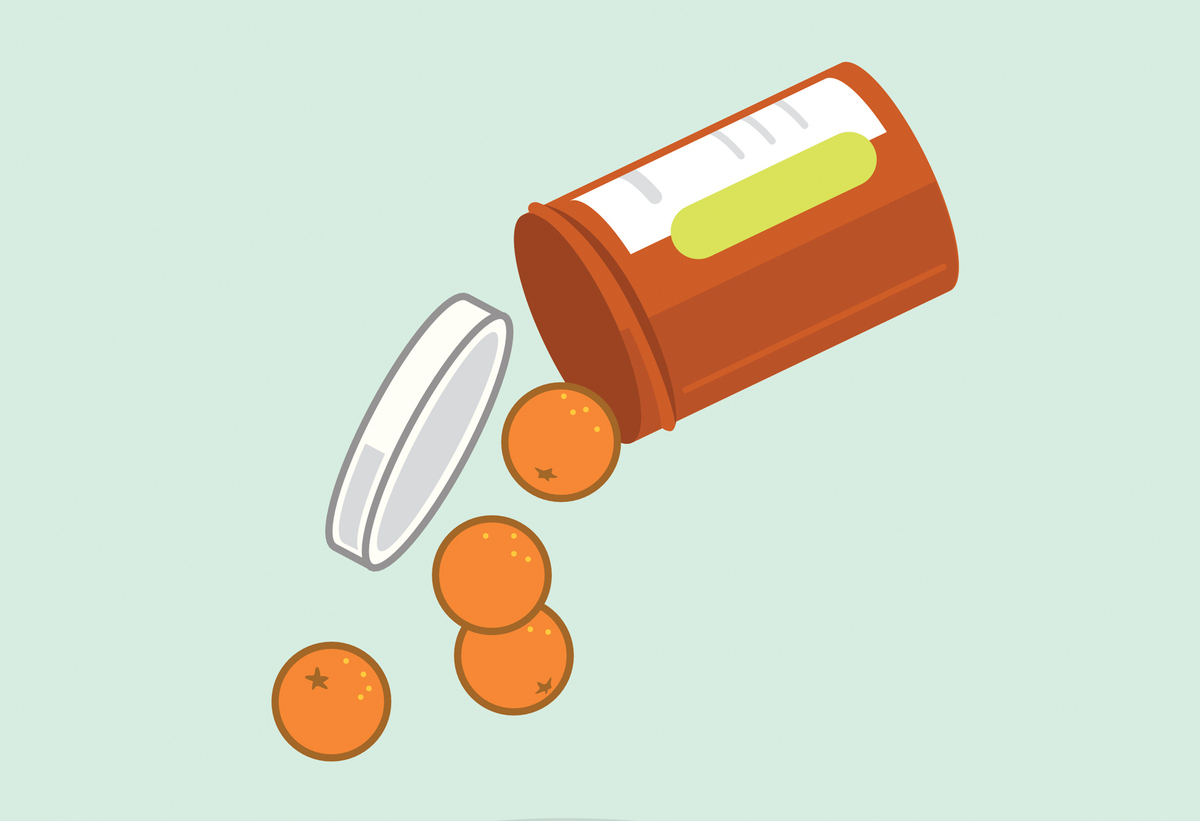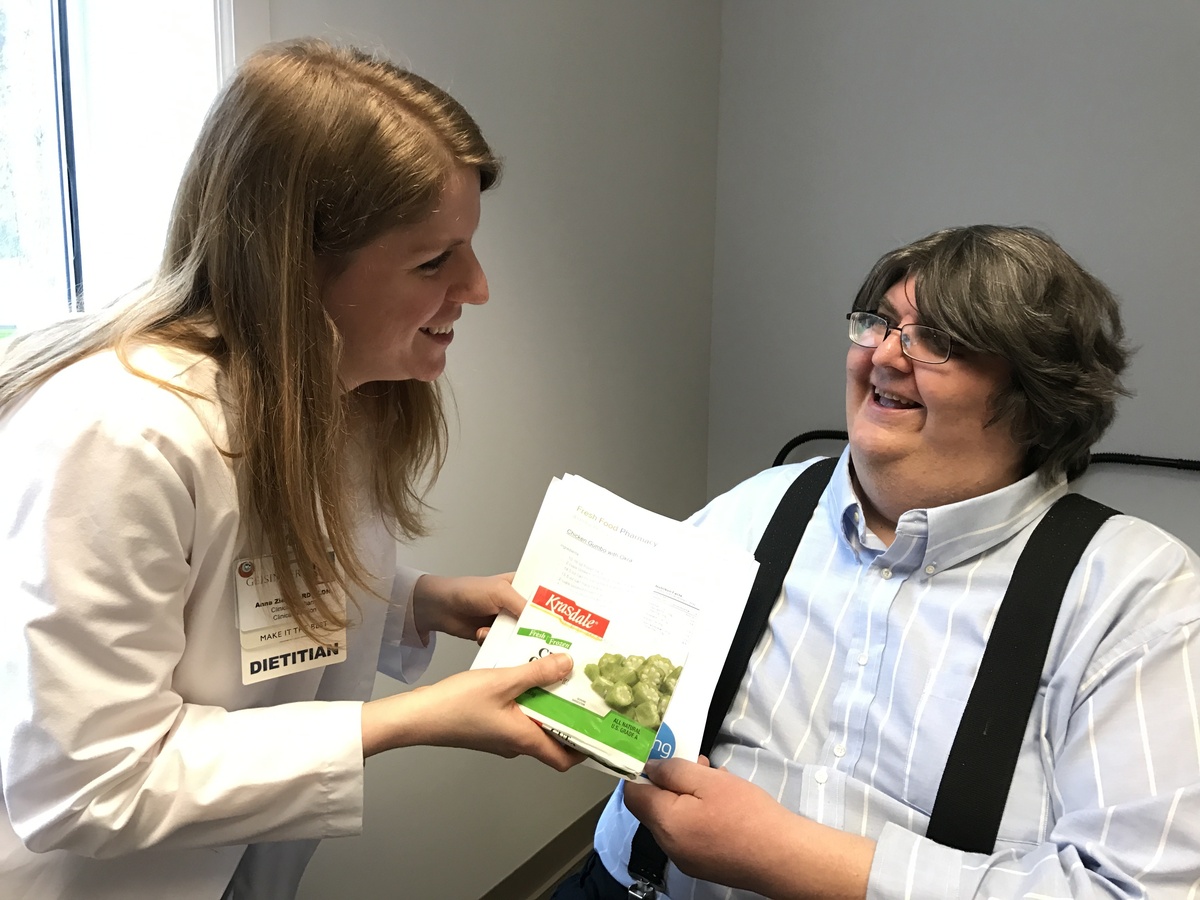This health care cabinet reduces costs - and Waistlines: The Salt: NPR
BigFishDesign / iStockphoto / Getty Images![Miniature oranges spread out of a bottle of pill.]()
BigFishDesign / iStockphoto / Getty ImagesThe advice to eat a healthy diet is not new. About 400 BC. J.-C., Hippocrates, the Greek doctor, had this missive: let food be your medicine.
But as a society, we have a long way to go. About one in two deaths per heart disease, stroke and type 2 diabetes in the United States are linked to poor diet. This is about 1,000 deaths per day.
There are many places to complain. Calories are inexpensive, and indulgent foods filled with salt, sugar and fat are usually within our reach 24/7.
So what is the best way to change this? Consider the story of Tom Shicowich. It starts with a toe. Her left pink finger
"One day, I looked down and it was a different color ... kind of blue," says Shicowich. And he started to feel sick. "I thought I came from the flu".
The next day, he was on the table of operation. One surgeon amputated his toe and it took two weeks of intravenous antibiotics to repel the infection.
Registered dietitian Anna Ziegler advises Tom Shicowich, who has type 2 diabetes. Since enrolling in the Food Food Fresh program, Shicowich has lost about 45 pounds. Its A1C level has decreased considerably.
Allison Aubrey / NPR
hide the legend
tipping the legend
Allison Aubrey / NPR![]()
Registered dietitian Anna Ziegler advises Tom Shicowich, who has type 2 diabetes. Since enrolling in the Food Food Fresh program, Shicowich has lost about 45 pounds. Its A1C level has decreased considerably.
Allison Aubrey / NPREverything said, he spent a month at the hospital and a rehabilitation facility. "Oh, I tell you, it was a bad year," said Shicowich.
But this was not only a bad luck. The urgency of her toe was somewhat predictable. Foot infections are a common complication of type 2 diabetes - often due to nerve damage and poor blood circulation, especially when the disease is not well controlled.
He accumulated about $ 200,000 in medical expenses following his emergency. The share he had to pay out of his pocket evacuated his savings account. "I disbursed $ 23,000 to the hospital, so it was a kick in the head," Shicowich told us.
This was also a revival.
Shicowich was over 100 pounds overweight. He was struggling against nerve damage, high blood pressure and kidney problems - all the complications of diabetes.
"So I knew it was time to change," he said. And last year he found the help - and motivation - that he was looking for: a new food pharmacy program that helped him revise how he eats.
Welcome to the food pharmacy
"People, hello, and welcome to the cutting and opening the ribbon of Fresh Food Pharmacy", "Said Sam Balukoff, the master of ceremonies at the new Geisinger Health System debut on a new food pharmacy located on a hospital in central Pennsylvania.
At this event, Shicowich was one of the stars of the show. Over the past year, it has included about 180 patients with type 2 diabetes . They participated in a pilot program to turn them into diets and lose weight. They receive free groceries from healthy foods every week.
Shicowich lost about 45 pounds, and he is now much more active.

The Geisinger Fresh Food Pharmacy is equipped with healthy cellar staples, such as oatmeal and peanut butter, as well as fresh produce.
Allison Aubrey / NPR
hide the legend
tipping the legend
Allison Aubrey / NPR
Every week, Shicowich and the other participants come to the food pharmacy. In its new incarnation, it looks more like a grocery store, with carefully stocked shelves filled with healthy staples such as whole grain pasta and beans. The refrigerators are full of fresh produce, green vegetables, low fat dairy products, lean meat and fish.
Participants meet individually with a registered dietitian. They receive recipes and practical instructions on how to prepare healthy meals. Then they go home with a very different type of prescription: five days of free and fresh food.
Shicowich says this is a huge change from his old habit. "I stop at a Burger King or a McDonald 's or buy a frozen Hungry - Man diner, a basic baccalaureate, you know, heat and eat".
But these days are over. Now he and his girlfriend prepare meals at home. He now says that it is much easier to climb a staircase or walk with his girlfriend.
"This is changing life"
Shicowich's health has improved. His blood sugar and blood pressure dropped so much that if he gets started, his doctors say that they will reduce their medications.
"This is a life changing," said David Feinberg, president and CEO of Geisinger Health System, on the results they have seen.
He says, so far, all patients in the pilot program have made similar improvements. "He's blowing," he said. And he says that the range of support patients are offered - everything from dietary counseling to wellness courses and workshops - can help them succeed.
Take, for example, the significant decreases in hemoglobin A1C levels in patients. It is a blood test used to track how patients with diabetes control their blood sugar levels.
A year ago, Shicovich's A1C was close to 11. Now it's down in the range of the top 6. Anything below 6.5 is considered below the threshold of type 2 diabetes, according to the Mayo Clinic. Feinberg says that this means that Shicowich - and other participants in the program - have a better chance of avoiding many complications of diabetes if they can maintain their A1C levels in this range.
"[They] will not be blind, [they] will not have kidney disease, amputations," says Feinberg. "The list goes on."
More expensive than paying for complications
When this program started, some questioned the premise of giving fresh and fresh food to patients. diabetes. But keep in mind that the costs associated with diabetes in the US now exceed $ 240 billion a year.
Once you consider this award, the Geisinger program can look like a good deal. Over the course of a year, the company will spend approximately $ 1,000 for each patient at Fresh Food Pharmacy. All participants in the program are low-income, so the gift of food has eliminated a major obstacle to eating well.

Patients enrolled in the Pharmacy Food Fresh program receive about one week of fresh and fresh produce and other items.
Allison Aubrey / NPR
hide the legend
tipping the legend
Allison Aubrey / NPR

Patients enrolled in the Pharmacy Food Fresh program receive about one week of fresh, fresh and other items.
Allison Aubrey / NPR






Comments
Post a Comment